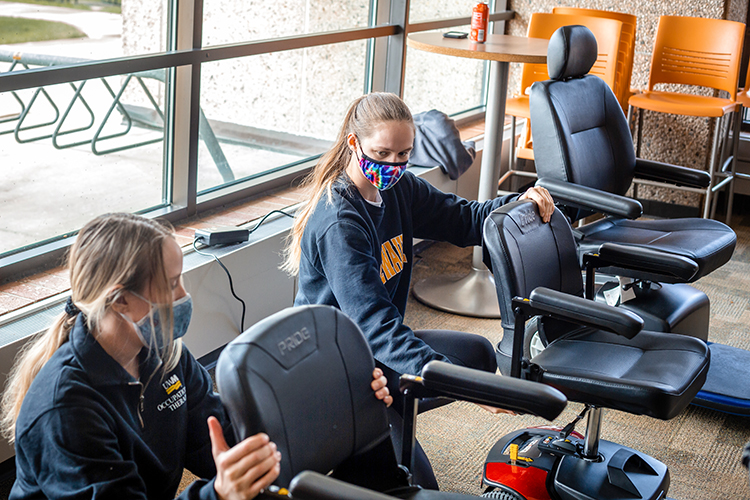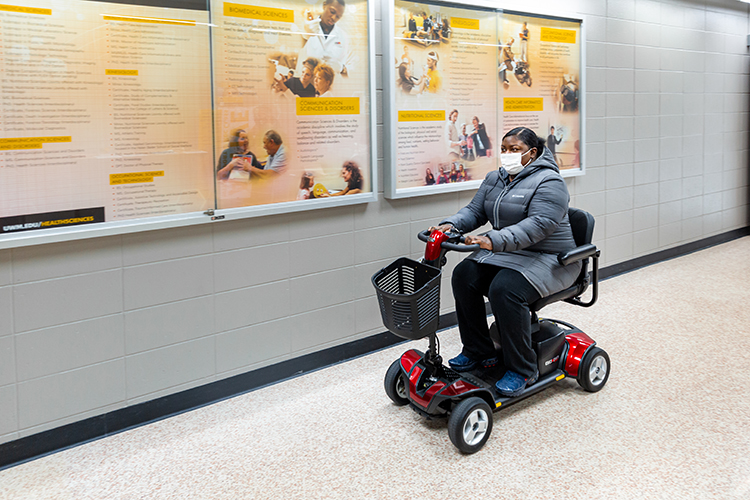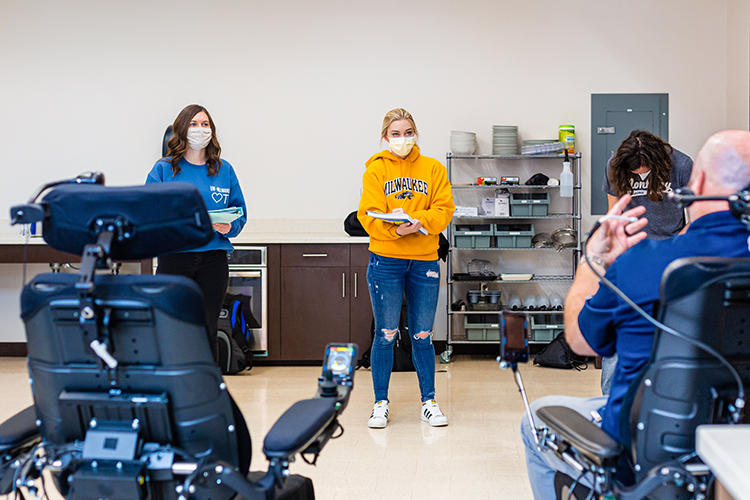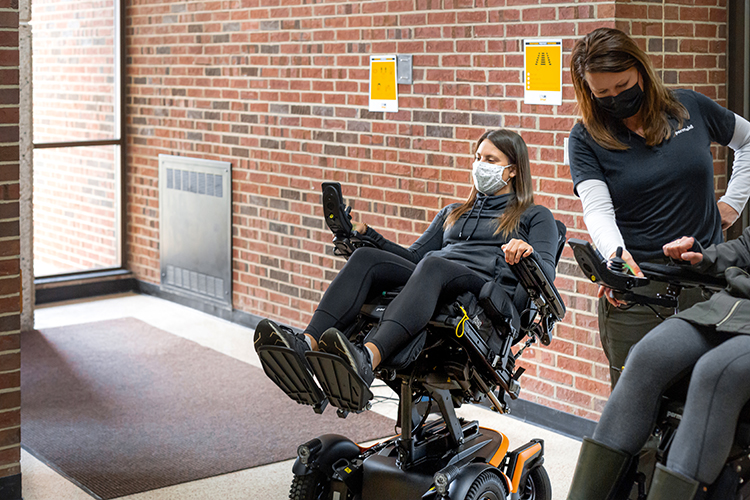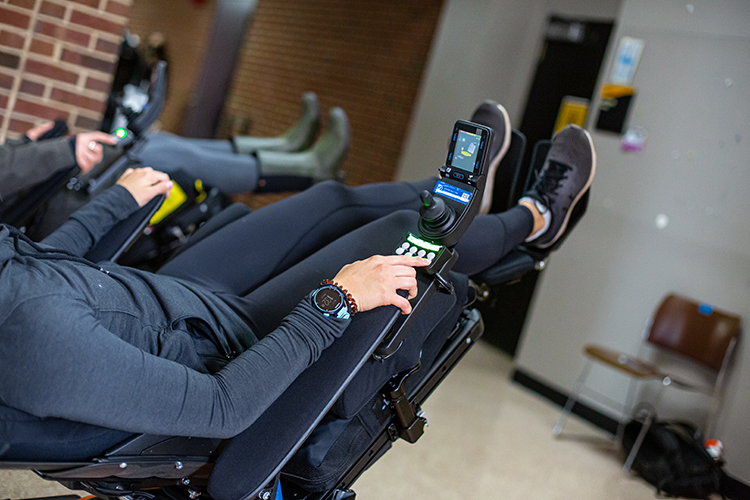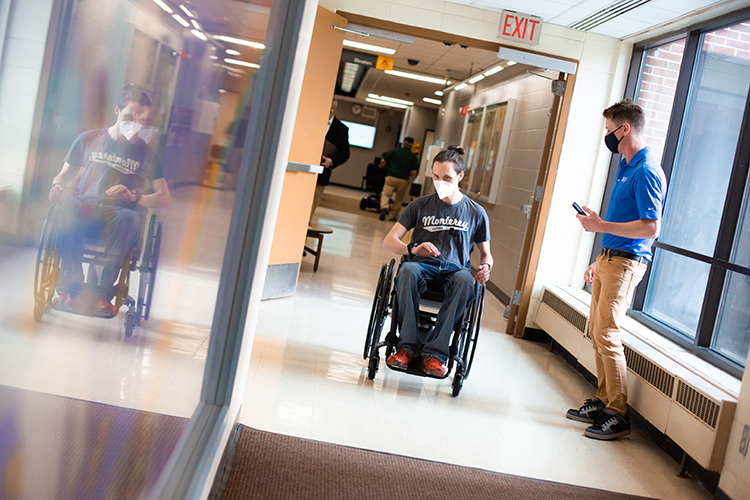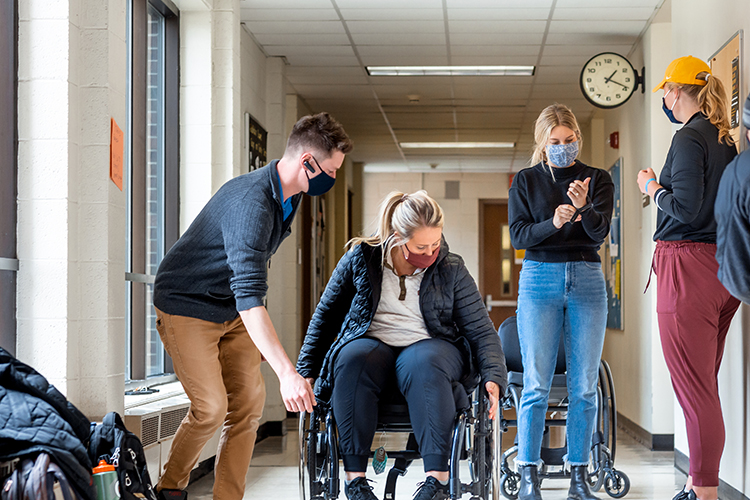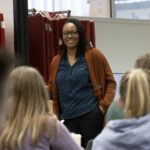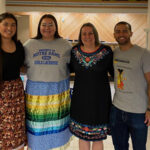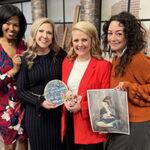Zooming through empty hallways in various wheelchairs, UWM occupational therapy students tested and learned about the mobility technology they will one day be using to help patients regain and maintain their independence.
On Mobility Technology Day, National Seating and Mobility, a mobility technology supplier, provided the equipment for the master’s students to test-ride and gain hands-on experience during their lab.
“There is no replacement for this experience,” said Michelle Silverman, a UWM clinical assistant professor. “It creates a physical and emotional empathy that helps students better understand their patients.”
Helping people ‘achieve independence’
UWM was the third university to have a nationally accredited assistive technology program, said Roger Smith, professor of occupational therapy. Smith helped establish the program 25 years ago when he realized very few programs taught students about all the technology and innovation going on in the field.
“We like to be hands-on and, as we say, seats on,” Smith said. “Our goal is to teach students to help people achieve independence.”
Students, both in person and via Zoom, moved among five stations in 15-minute increments to test out equipment designed for various needs. Equipment suppliers, distributors and manufacturers walked them through how to use the chairs and how to match patients with the right piece of equipment.
“It is important to make visits like this,” said Jon Starich, a rehab specialist for National Seating and Mobility. “We are training the future generations.”
A holistic approach to helping people
National Seating and Mobility also trained students how to write letters of necessity, the documentation needed to connect patients with insurance to pay for the equipment.
Silverman is the program director for the Assistive Technology and Accessible Design certificate offered through the UWM School of Health Sciences. The interdisciplinary certificate is taken by students who intend to be physical therapists, special education coordinators, architects and engineers.
The program is designed to instruct students how to use mobility technology and to design spaces easily accessible to individuals who use wheelchairs, Silverman said.
“They have a holistic approach,” said Joseph Michalski, an occupational therapy student, after finishing all the stations. “It’s all about the people and what we can do for them.”
